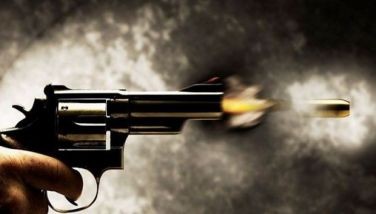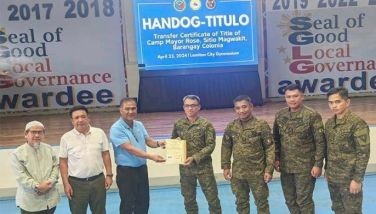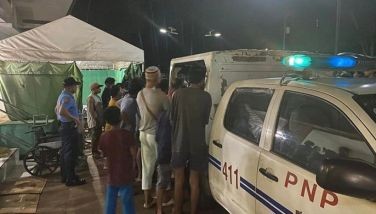A replica Spanish galleon relives our history!

Last Tuesday during our bike ride, we stopped in the town of Sindangan and by coincidence, we met with Atty. Jess Sarmiento, provincial legal officer of Zamboanga del Norte whose family hails from Carcar, Cebu and is even related to my first cousin Tony Segura whose mother just like the Avila Family also comes from Carcar. He wanted me to meet with Zamboanga del Norte Governor Rolando Yebes (I knew him way back in University of San Jose Recoletos) who was there to inaugurate a new hospital.
Unfortunately we did not have the luxury of time. But one thing I can tell you about Zamboanga del Norte (Zanorte for short) Gov. Yebes is a three-term Governor who has given a lot of infrastructure projects to his Province. Proof of this is the highway from Dipolog all the way to Sindangan and straight to Ipil in Zamboanga Zibugay. While these places are far and away from the usual tourism destinations, they have their own charm that tourists ought to come and visit. A day after passing through Dipolog, Atty. Sarmiento sent me a text that the Governor invited me to stay longer in Dipolog and host our visit. Maybe I should go to Dipolog for a longer stay.
* * *
Talking about tourism, this week, the Province and the City of Cebu play host to Galleon Andalucia, which came from Spain to Manila and finally has come to Cebu. This galleon is a replica of the Spanish galleons of yore when the famous Galleon Trade happened between Acapulco, Mexico, Manila, Cebu and Canton in China.
Call it a boyhood dream that I would someday see a Tall Ship . . . that’s what they were called in the era of the sailing ships long before the internal combustion engine was discovered. We went on board the Galleon Andalucia together with Gov. Gwen Garcia, Mayor Michael Rama, Councilor Margot Osmeña and Hon. Consul Jaime Picornell of Spain.
It is not everyday that Cebuanos are given a glimpse of history. Spanish galleons are very much a part of our history, as Cebu was part of the Archdiocese of Mexico and we were very much in the famous Galleon Trade with Manila, Cebu and Acapulco. The last time a galleon came to the Port of Cebu my great, great grandfather wasn’t even born yet!
While the Galleon Andalucia is docked in Cebu Port, in the old days, Cebu really did not even have a port. One of the oldest photos displayed in Fort San Pedro is a sailing ship anchored off the seashore. Indeed, galleons anchored off the seashore and brought their goods via long ships which they rowed into the esteros of Cebu. This is why Colon St. became a center of commerce as the goods from the galleons are unloaded in the esteros, one of which lies parallel to Colon St. Of course the esteros have become dirty canals that drain rain water and refuse, which is why we get flooded in the city.
Our media friends also came aboard the wooden vessel, after all, it is not everyday that we see a sailing ship in our ports. However when I heard a TV reporter say that the vessel was a replica of the ship of Magellan, I had to cut her off and give her some lessons in history that Ferdinand Magellan used four Spanish Carracks and a Caravel, while the galleon trade happened more than a hundred years after Magellan had died.
Magellan’s ships were the Victoria, San Antonio, Concepcion, Santiago and the Trinidad. Except for the Trinidad which was a Caravel, all of Magellan’s ships were called “Spanish Carracks” while we were on board a replica of a Spanish galleon. The Galleon Andalucia is a replica of the Galleon Trading that sailed the Pacific Ocean in the 17th Century; a hundred years after Magellan came to the Philippines.
The Spanish Galleon trade also included Canton and other Chinese ports. This is why the Galleon Andalucia also went to Shanghai Expo 2010 to give the expo visitors a lesson in Spanish history when they traded goods with the Philippines and China. In short, Spanish Galleons were huge cargo ships. In fact, Mandaue was once a place where Spanish Galleons were made.
Few people including historians realize that the galleon trade is also the starting point for Filipinos to be among the world’s greatest seafarers. Yes, people say that in the maritime world today, 30 percent or higher are Filipino crewmen. But the seafarers of today had their ancestors on board Spanish Galleons. In the book written by William Lytle Schurz entitled The Manila Galleon he wrote that ratio of a Malay and an Indio crew in the galleon was one out of five. We were called Indios then. It had to happen that whenever a galleon loses its crew through desertion or death, the ship captains couldn’t find Spaniards to replace the crew, hence Malays or Indios were put to service in the galleon trade and they learned their craft very well, from fixing riggings to the use of a compass. Indeed there’s so much history by just seeing this replica of the Spanish galleon
* * *
For email responses to this article, write to [email protected] or [email protected]. His columns can be accessed through www.philstar.com.
- Latest
- Trending





























